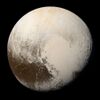Astronomy:(444030) 2004 NT33
| Discovery[1] | |
|---|---|
| Discovered by | Palomar team |
| Discovery site | Palomar Obs. |
| Discovery date | 13 July 2004 |
| Designations | |
| (444030) 2004 NT33 | |
| 2004 NT33 | |
| Minor planet category | TNO[1] · cubewano[2] Extended[3] |
| Orbital characteristics[1] | |
| Epoch 4 September 2017 (JD 2458000.5) | |
| Uncertainty parameter 3 | |
| Observation arc | 33.99 yr (12,415 days) |
| Earliest precovery date | 10 August 1982 |
| |{{{apsis}}}|helion}} | 50.014 AU |
| |{{{apsis}}}|helion}} | 36.838 AU |
| 43.426 AU | |
| Eccentricity | 0.1517 |
| Orbital period | 286.18 yr (104,527 days) |
| Mean anomaly | 41.709° |
| Mean motion | 0° 0m 12.24s / day |
| Inclination | 31.231° |
| Longitude of ascending node | 240.87° |
| 37.400° | |
| Physical characteristics | |
| Dimensions | 423+87 −80 km[4] 482.53 km (calculated)[5] 513 km (estimated)[6] |
| Rotation period | 7.87±0.05 h[2] |
| Geometric albedo | 0.08[6] 0.10 (assumed)[5] 0.125[4] |
| C[5] | |
| Apparent magnitude | 20.94[7] |
| Absolute magnitude (H) | 4.4[2] · 4.7[1][5] · 4.9[6] |
(444030) 2004 NT33 is a classical trans-Neptunian object and possible dwarf planet of the Kuiper belt in the outermost region of the Solar System, approximately 450 kilometers in diameter. It was discovered on 13 July 2004, by astronomers at Palomar Observatory, California, United States.[8]
Orbit and classification
2004 NT33 is a "cubewano", a classical, low-eccentricity object in the Kuiper belt, that orbits the Sun at a distance of 36.8–50.0 AU once every 286 years and 2 months (104,527 days). Its orbit has an eccentricity of 0.15 and an inclination of 31° with respect to the ecliptic.[1] It is currently 39 AU from the Sun.[7]
A first precovery was taken at the Siding Spring Observatory in 1982, extending the body's observation arc by 22 years prior to its official discovery observation at Palomar.[8]
Physical characteristics
Rotation period
In 2009, astronomers obtained a rotational lightcurve of 2004 NT33 from photometric observations, which were taken at the Galileo National Telescope (TNG) on the island of La Palma, and at the Sierra Nevada Observatory in Granada, both located in Spain. The ambiguous lightcurve gave a rotation period of 7.87 hours with a low brightness amplitude of 0.04 magnitude ({{{1}}}).[2]
Diameter and albedo
According to the "TNOs are Cool" survey, using observations from the space-based Herschel and Spitzer telescopes, 2004 NT33 measures 423 kilometers in diameter and its surface has a visual geometric albedo of 0.125,[4] while the Collaborative Asteroid Lightcurve Link assumes an albedo of 0.10 and calculates a diameter of 482.53 kilometers with on an absolute magnitude of 4.7.[5]
Naming
As of 2017, this minor planet remains unnamed.[8]
References
- ↑ 1.0 1.1 1.2 1.3 1.4 "JPL Small-Body Database Browser: 444030 (2004 NT33)". Jet Propulsion Laboratory. https://ssd.jpl.nasa.gov/sbdb.cgi?sstr=2444030. Retrieved 2 June 2017.
- ↑ 2.0 2.1 2.2 2.3 Thirouin, A.; Ortiz, J. L.; Campo Bagatin, A.; Pravec, P.; Morales, N.; Hainaut, O. et al. (August 2012). "Short-term variability of 10 trans-Neptunian objects". Monthly Notices of the Royal Astronomical Society 424 (4): 3156–3177. doi:10.1111/j.1365-2966.2012.21477.x. Bibcode: 2012MNRAS.424.3156T.
- ↑ Marc W. Buie. "Orbit Fit and Astrometric record for 444030". SwRI (Space Science Department). http://www.boulder.swri.edu/~buie/kbo/astrom/444030.html. Retrieved 2018-02-18.
- ↑ 4.0 4.1 4.2 Vilenius, E.; Kiss, C.; Müller, T.; Mommert, M.; Santos-Sanz, P.; Pál, A. et al. (April 2014). ""TNOs are Cool": A survey of the trans-Neptunian region. X. Analysis of classical Kuiper belt objects from Herschel and Spitzer observations". Astronomy and Astrophysics 564: 18. doi:10.1051/0004-6361/201322416. Bibcode: 2014A&A...564A..35V.
- ↑ 5.0 5.1 5.2 5.3 5.4 "LCDB Data for (444030)". Asteroid Lightcurve Database (LCDB). http://www.minorplanet.info/PHP/generateOneAsteroidInfo.php?AstInfo=444030%7C. Retrieved 2 June 2017.
- ↑ 6.0 6.1 6.2 Michael E. Brown. "How many dwarf planets are there in the outer solar system? (updates daily)". California Institute of Technology. http://web.gps.caltech.edu/~mbrown/dps.html.
- ↑ 7.0 7.1 "(444030) 2004 NT33". AstDyS-2 (Asteroids – Dynamic Site). https://newton.spacedys.com/astdys/index.php?pc=1.1.3.0&n=2004NT33.
- ↑ 8.0 8.1 8.2 "444030 (2004 NT33)". Minor Planet Center. https://www.minorplanetcenter.net/db_search/show_object?object_id=444030. Retrieved 2 June 2017.
External links
- Asteroid Lightcurve Database (LCDB), query form (info )
- Dictionary of Minor Planet Names, Google books
- Asteroids and comets rotation curves, CdR – Observatoire de Genève, Raoul Behrend
- Discovery Circumstances: Numbered Minor Planets (440001)-(445000) – Minor Planet Center
- (444030) 2004 NT33 at the JPL Small-Body Database
 |



